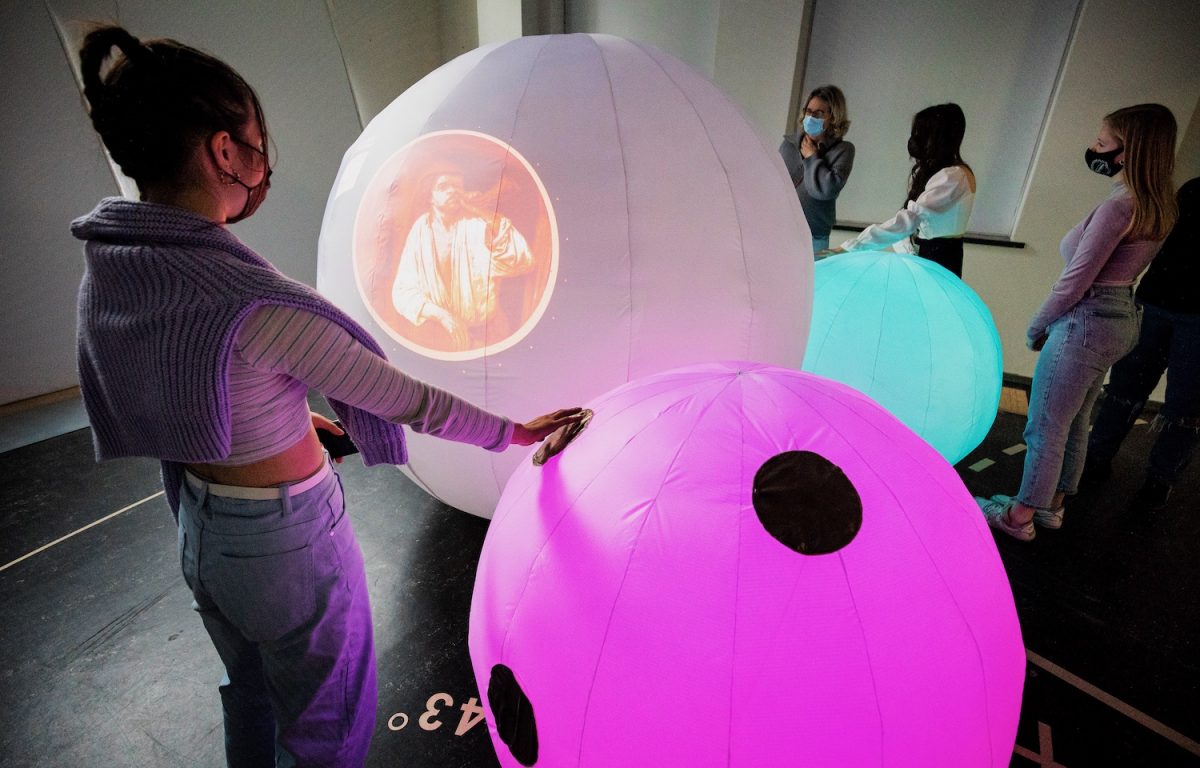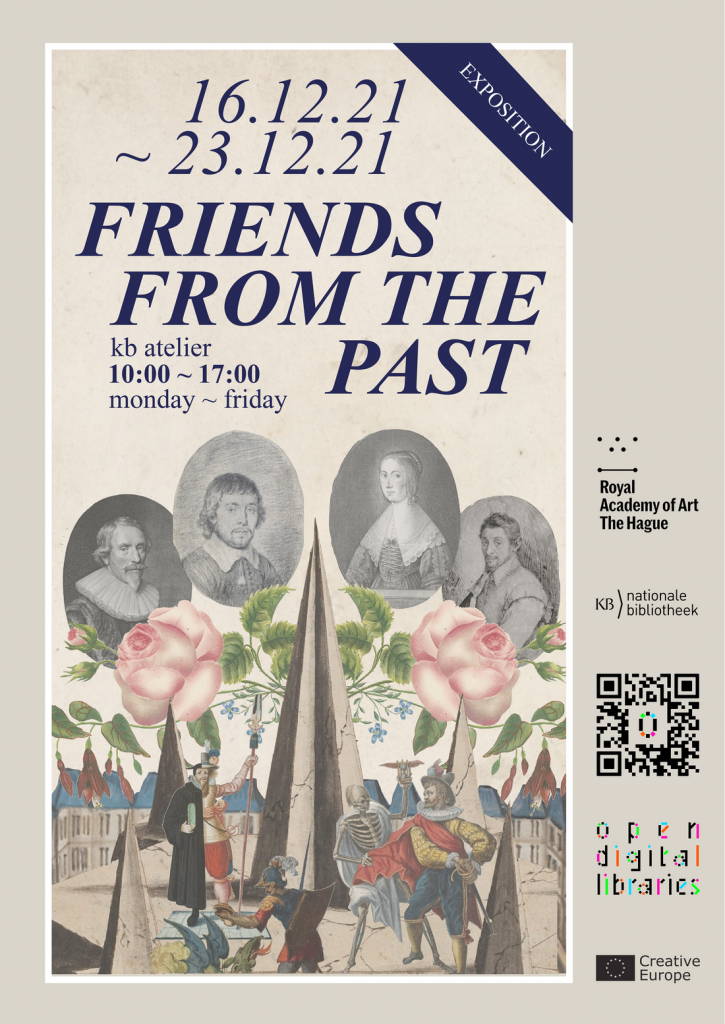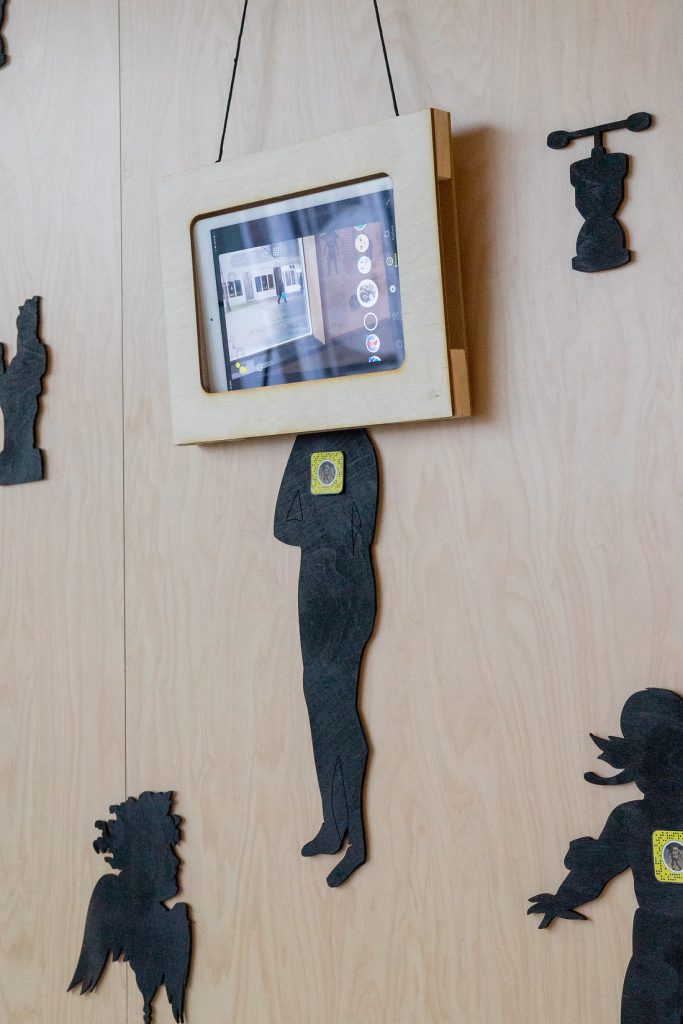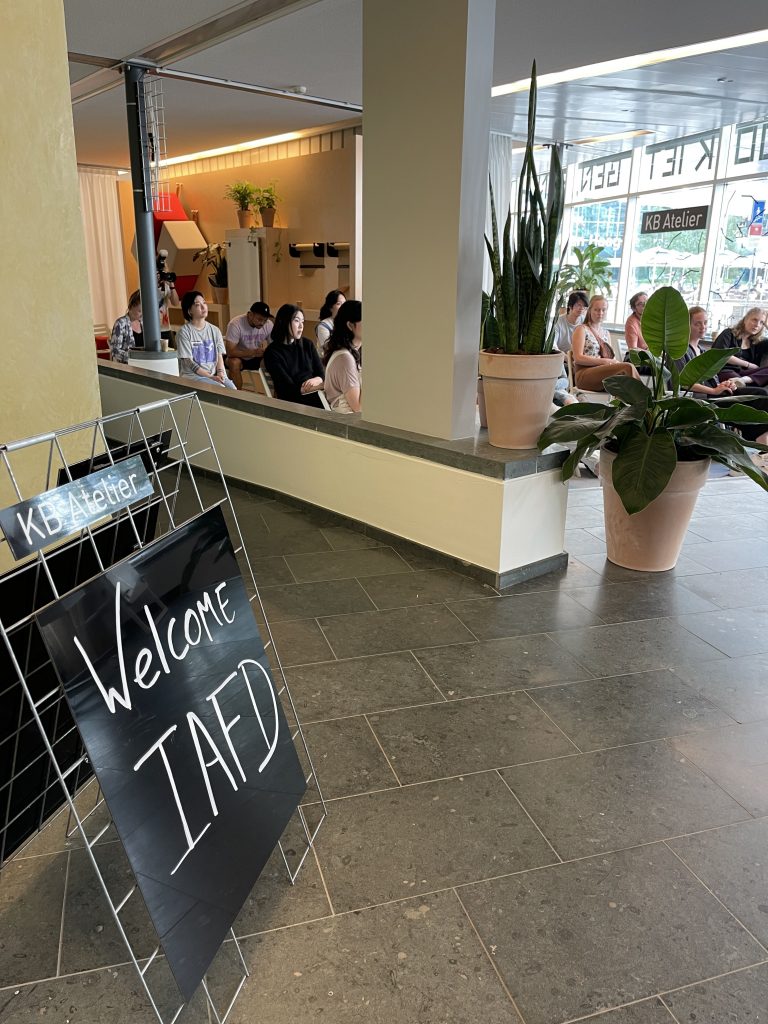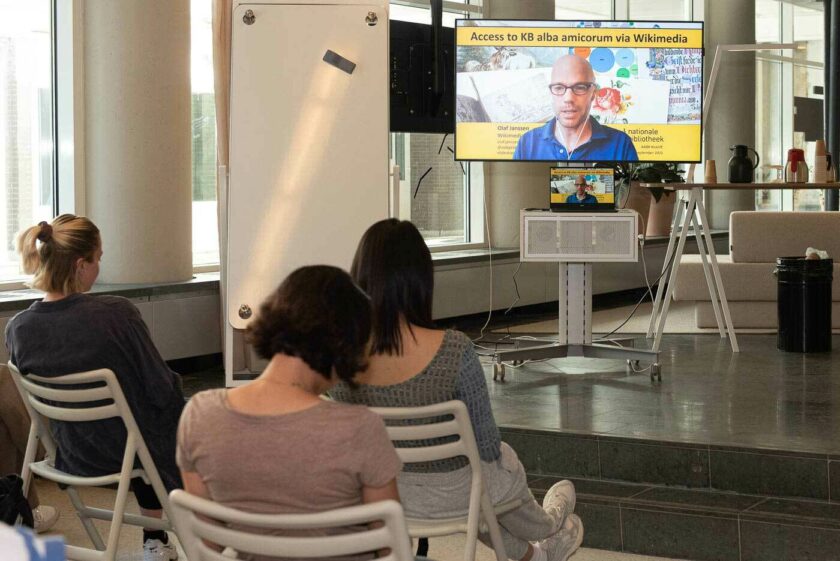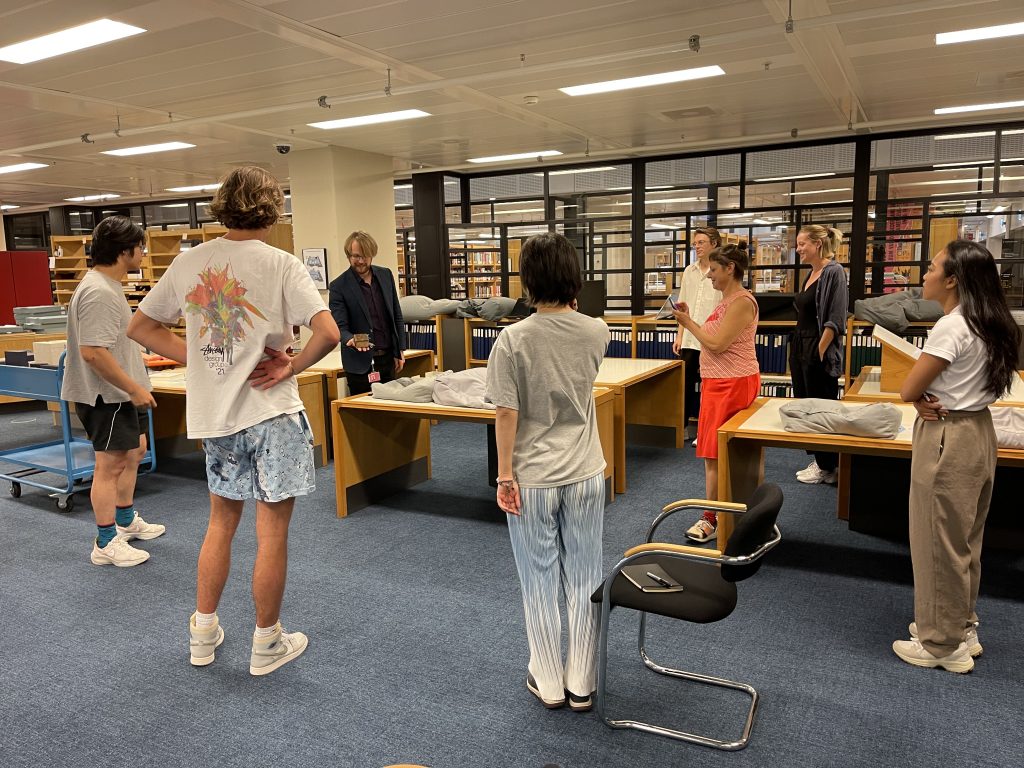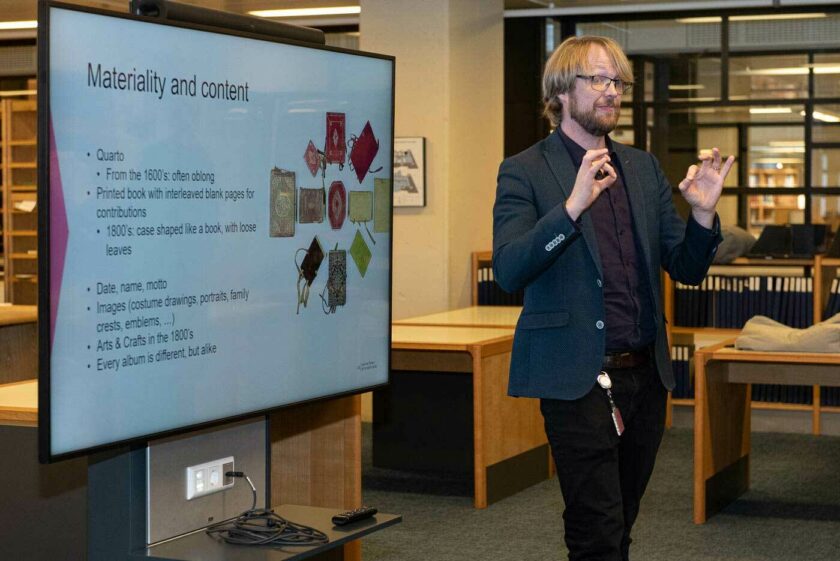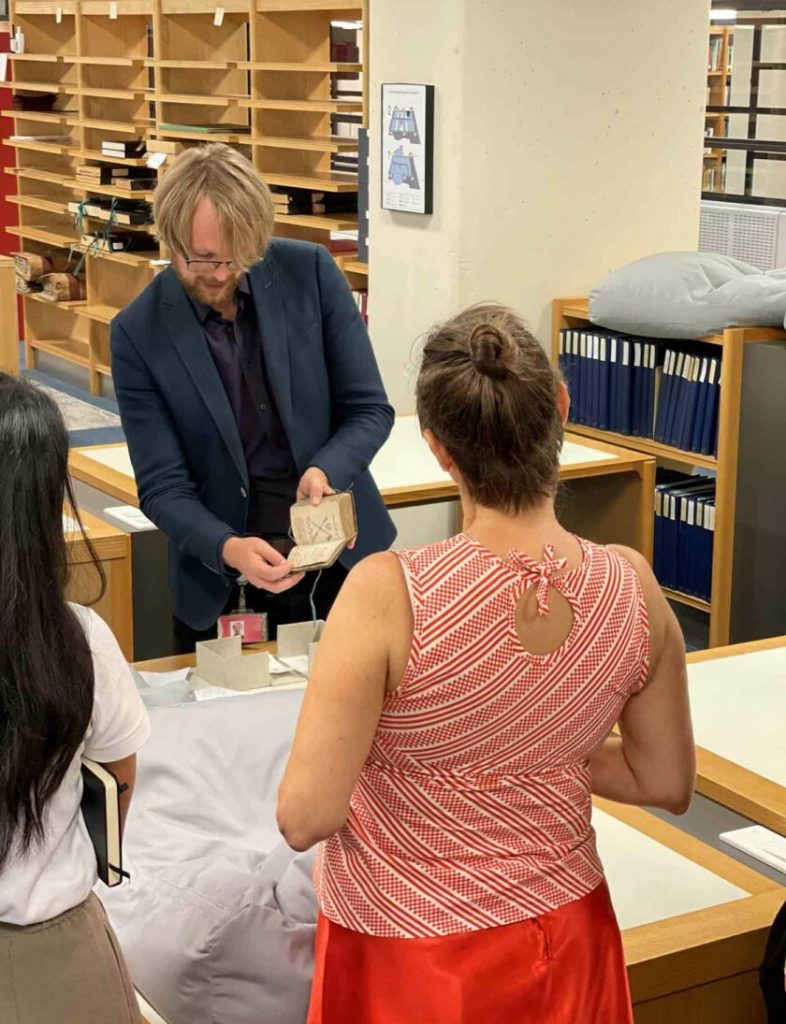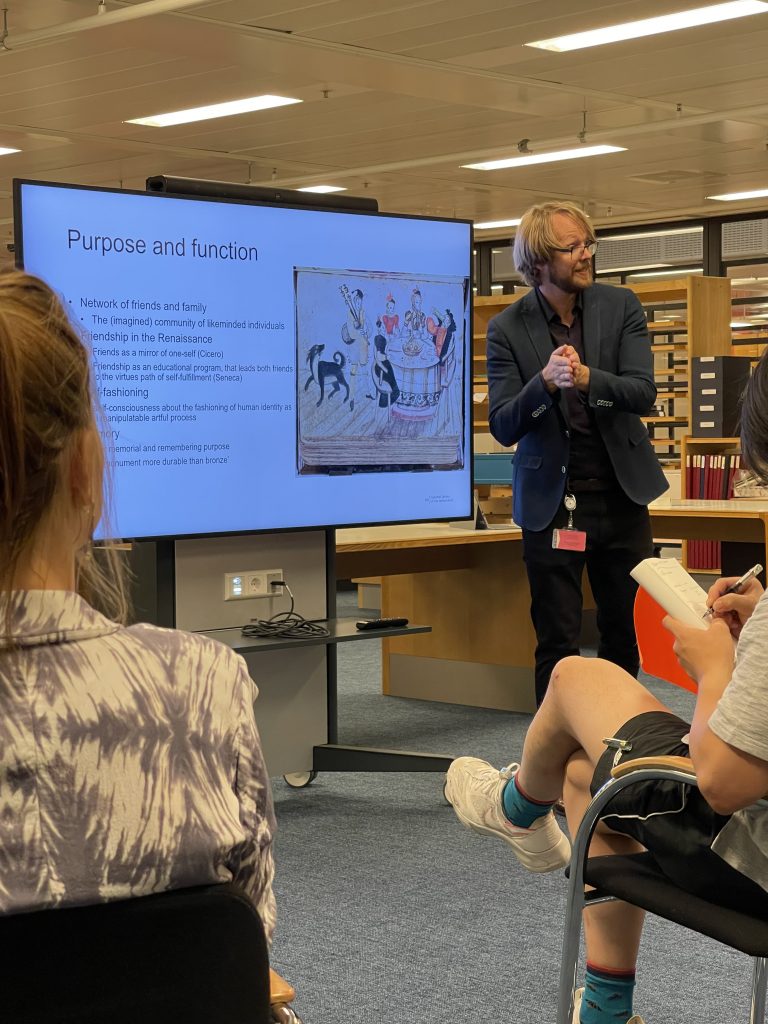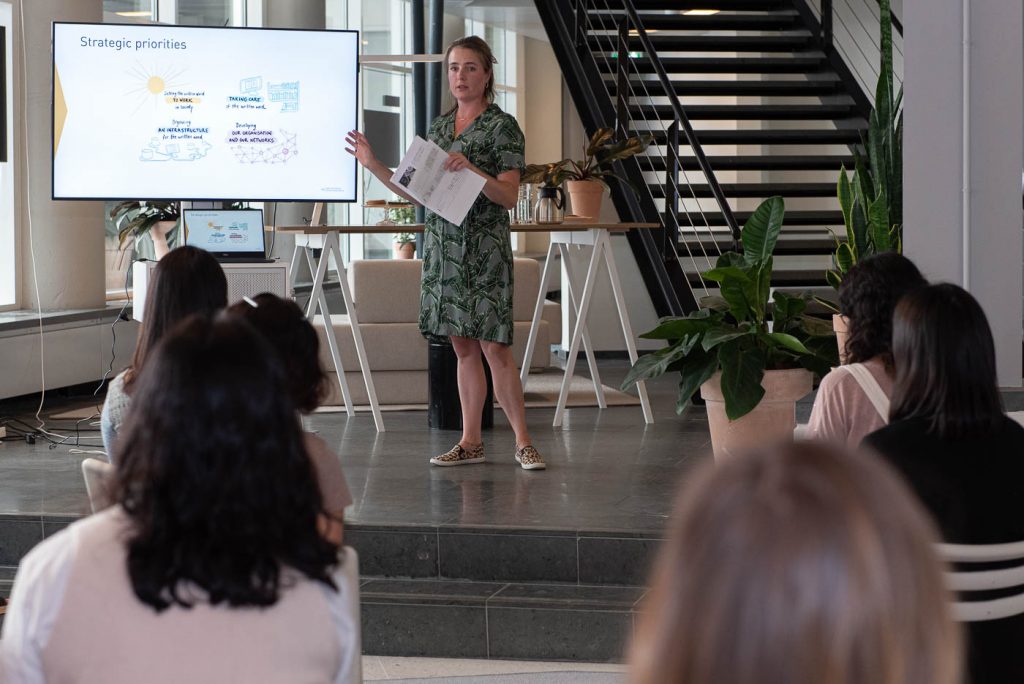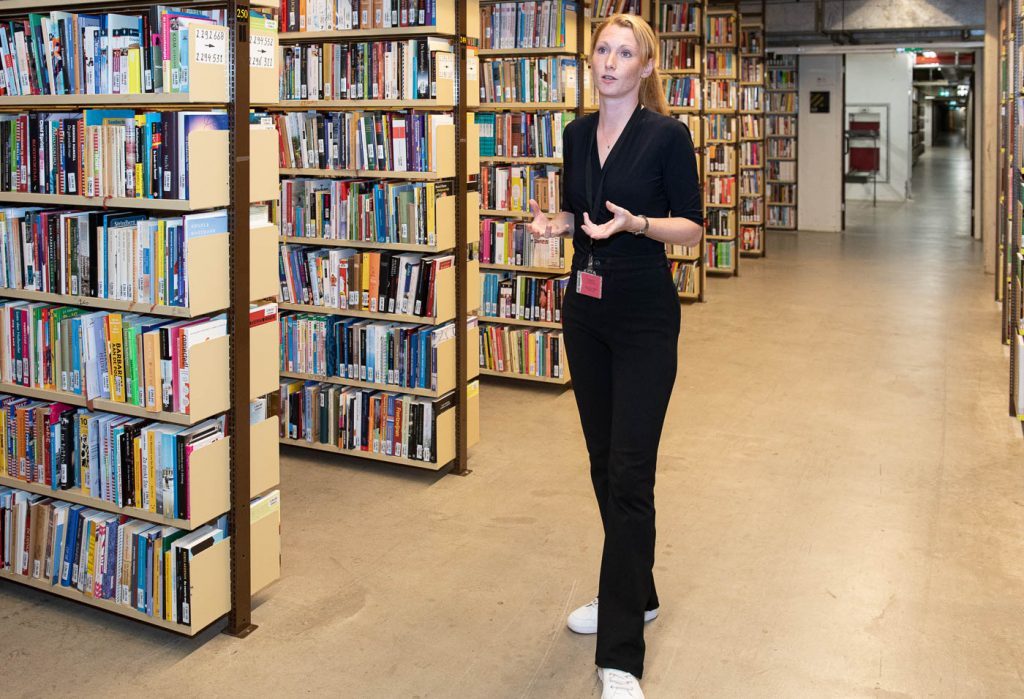The KY-O-MI concept makes it possible for the library to expose their digital collection at a satellite location. For example, at the train station or during an event at a university. The inflatable installation creates two access point to the digital collection of the library to allow data exploration in a social setting.
Student team: Dorrit Huijskes, Eva Jonkers, Gloria Orcan, Kenwyn Hoefnagel, Loes de Vries, Vivian Nguyen
Interactive Environments minor edition 2021-2022
In the 2021-2022 edition of the Interactive Environments minor they collaborated with the KB National Library to develop 5 concepts as an answer to the following design brief. Traditionally, libraries are strongholds for people who enjoy consuming tangible content. However nowadays, more and more content is being published digitally and analogue collections are being digitalised. And thus, the question arises: how can libraries adapt and thrive in the future, while also bridging the gap between their physical and digital collections and spaces?
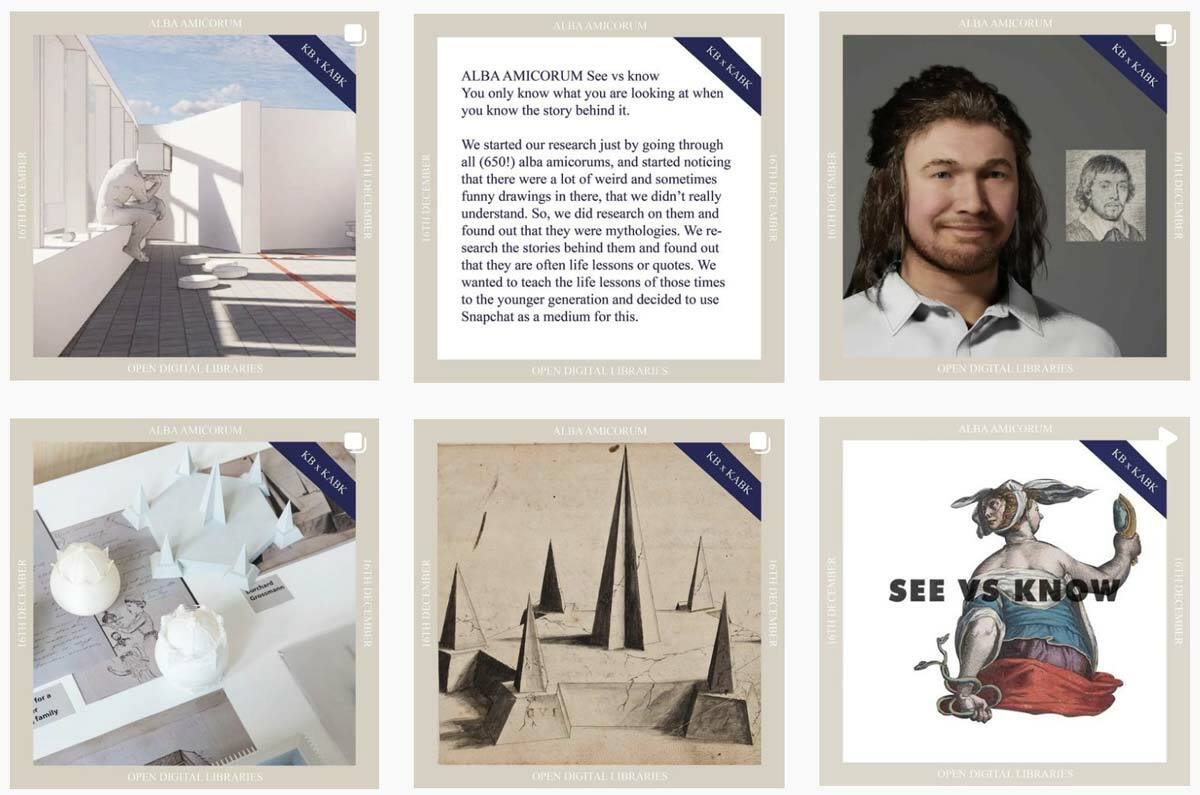
The first collaborative project with students from the Royal Academy of Art, The Hague (KABK) has been successfully completed. This collaboration, part of the Open Digital Libraries project, revolves around making the KB collection more visible and findable.
The first results
In recent months, the first group of fourth-year students from the Interior Architecture and Furniture Design bachelor’s program have been working on making the KB collection Alba Amicorum (friends’ books) attractive. The (digitized) seventeenth-century album by Jacob Heyblocq, rector of the Latin school of Amsterdam, is central to the research. From December 16 to December 23, the five installations are set up in the KB Atelier. On January 22, subject to possible corona measures, it is possible to view the results during the open day in the KABK.
Collaboration between TU Delft and KABK
In order to achieve the objectives, we have started a collaboration with TU Delft and KABK. Students from both programs dive into our digital datasets, our physical and digital collection (from Delpher, to manuscripts, to the web archive) and engage them in conversation with users, students. In this way they hope to be able to map out what national libraries can focus on when it comes to making the treasures that are preserved more visible and tangible. After all, how do you make it clear that the collections of national libraries are owned by and for everyone?
The sequel
From January, a new group of KABK students will continue to work on the question of how a digital collection can be presented to the public. In due course we will share information on how you can get involved, view the results or think along with the students.

KABK-IAFD «Secret Garden»
By – Joshua Holetz, Louise Spisser, Deandra Jauw, Youbin Kang, Victor de Groot
The women albums at that time have some interesting qualities. First, these albums are made in very intimate contexts: the albums remain in the house of the holder and very little people (mostly family members, close relatives or friends) are asked to make something for it. Even though the women albums of the nineteenth century are not as private objects as the albums of the seventeenth century, they are definitely more personal. They are indeed very refined objects, gathering real pieces of art like embroideries and other craftworks that highlight the skills of the maker. As a result, it is a very precious object in the eyes of the owner.
For this project, we have chosen some key visual elements that kept appearing in women albums of that time. The most obvious one is «flowers». At that time, it wasn’t a common thing to associate women with flower, so researchers assume that their appearance may be more related to the idea of nature as inspiration when learning how to draw or linked to the Romantic era, when returning back to nature also meant embracing the ephemerality of life. The two other themes coming forwards that we decided to highlight are textures, from the use of hair or embroideries and cut outs from the very refined punched pages.

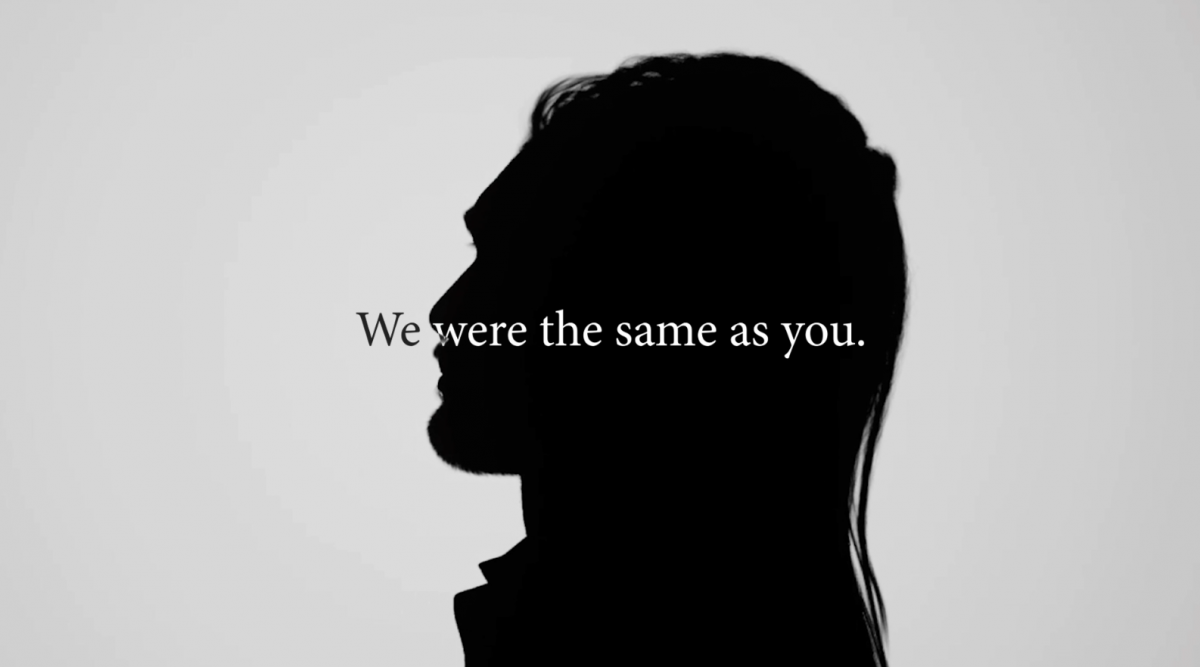
KABK-IAFD «Resurrection»
By – Chloe Snoeks, Hyemi Lee, Sarang Han, Yunjia Zhou
The project stemmed from our distinct experiences and interpretations of the Alba Amicorum. We saw the Alba as a medium for time travel to network with the people who contributed or owned these books. Networking is a central concept to us, a natural instinct of human beings. Despite being centuries apart, these Alba figures were quite similar to us.
To those in the present day, we think “they were the same as us.”; to those in the past, they think “you still do what we did”.
Four individuals extracted from the 17th century were “revived”. They inform us about the Alba contents: Jacob Heyblocq as the representative, Anna Maria van Schurman as the moderator, Jacob Cats as the contributor, and Crispijn de Passe as the maker. These four were transformed into modern avatars. Avatars are used as a method to contemporise history by bringing the past to the present, and upgrade the past figures to current and potential future time periods. The KB building will thus become a bridge between two timelines, to allow present and past to be together and interact in the same space. We see this digital theatre as an opportunity of the future library.

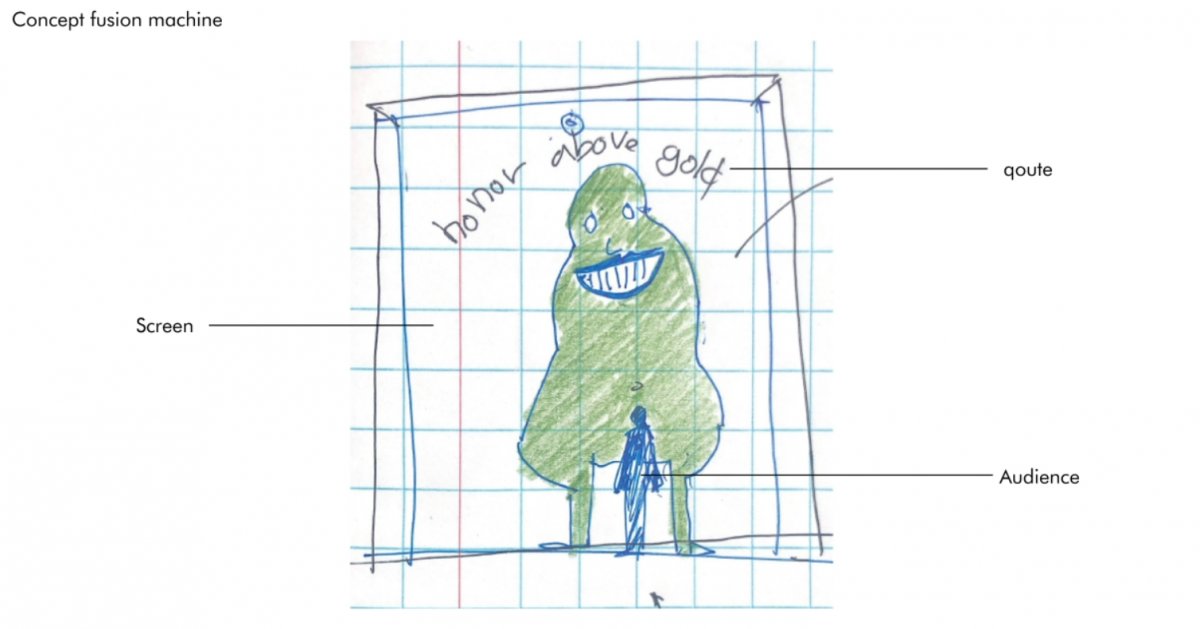
KAKB – IAFD «See vs. Know»
By – Jaiho Park, Hilde Fledderman

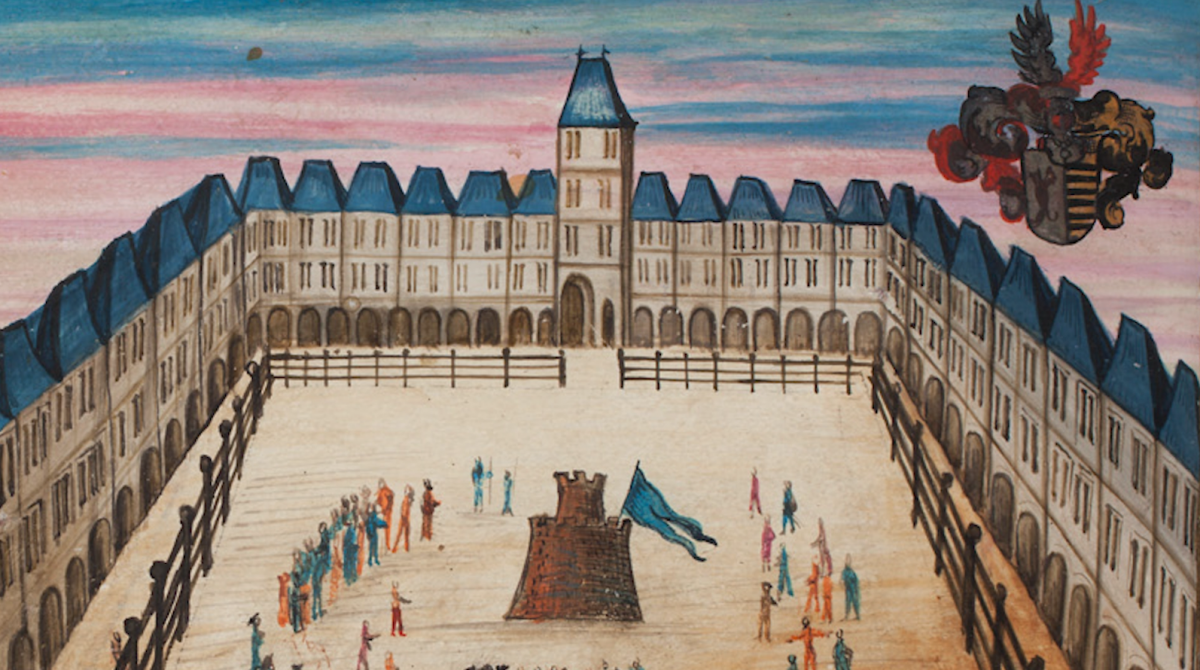
KABK – IAFD «Back to the present»
By – Cynthia Bruinsma, Chen Jia, Mik Bakker
Images and drawings shown in diverse Alba Amicorum are translated into a series of films, were we grasp the historical symbolism and interpret it into topics from our contemporary life. We use a hands-on approach for the scenery and create a sustainable set design by working with left-over material from our academy.
We got intrigued by the expressive drawings and images from the Alba’s; Album amicorum of Hans Heinrich Oberhaupt (film 1), Album amicorum of Jacob Heyblocqs (film 2) and Album amicorum of Geertruydt van Engelsteedt (film 3).
Album amicorum of Hans Heinrich Oberhaupt (film 1)
‘In Paris, Oberhaupt had six gouaches painted on parchment added to his album, including a view of the Île de la Cité with the Pont Neuf and a picture of a wing of the Louvre. The most vivid picture is that of the Place des Vosges (then Place Royale) where, under great public interest, a not exactly gentle duel takes place.’
We are referring the dual as a strike. A fight for your believes or opinions.
We picked the strike about the housing market, that happened on 13 September 2021 in Amsterdam but also has been active in different cities and countries. The Place Royale is translating the high rents of housing today.
Album amicorum of Jacob Heyblocqs (film 2)
‘Fishing was a major industry at the time of the depiction of mackerel. The sea was then rich in mackerel and other kinds of fish. What is certain is that from the moment people settled on the coast, fish was caught, eaten, and traded. This is evidenced by archaeological findings of fish remains. Image in Alba Amicorum, Jacob Heyblocqs.’
In our contemporary time the fish industry still plays a major role in society. In contrast with the past, our sea is beginning to contain more and more plastic and garbage. A term for it has even been coined: plastic soup.
Any element, whether chemical or natural, that upsets the balance of the sea and therefor living creatures of the sea, is considered water pollution or simply a pollutant.
Album amicorum of Geertruydt van Engelsteedt (film 3)
‘Different men tried to win Geertruydt heart and a place in the Frisian noble family. In 1616 Frans Jongema had a gouache made showing Tobias crossing a river, accompanied by the angel Raphael, and provided it with a striking rhyme. However, the angel did not lead him to Geertruydt, but to Trijn van Ockinga, whom he married on 21 October 1621.’
We zoom in on the travel from Tobias. About the adventure he is taking and new experiences that going to happen. We link this with the fact that traveling has been difficult or even not possible during the Covid lockdowns. Tobias, the unfortunate young backpacker has been disappointed by the ‘cancelled’ red signs at the airport. His adventure must wait or gets another turn.

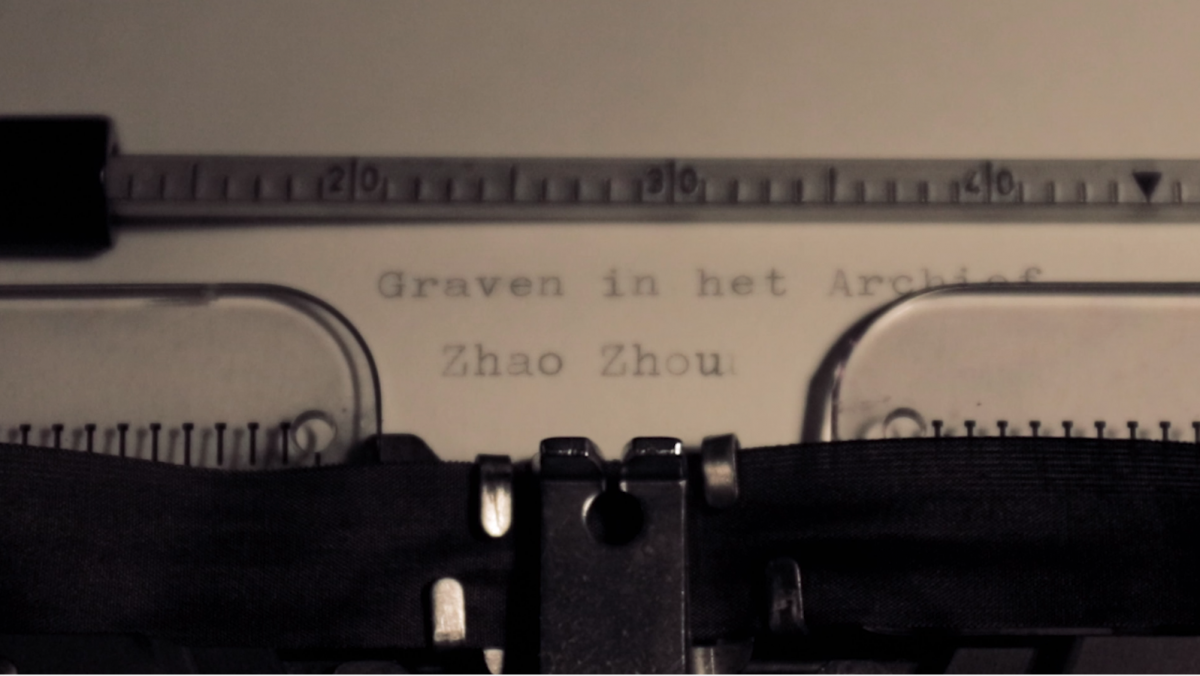
KABK – IAFD «Digging in the Archive»
By – Zhao Zhou
This project brings objects from existing Alba Amicorum’s to the present. Making research more physical again, reintroducing knowledge sharing and a more intuitive research method within the context of a library. This collection carries intriguing illustrations that beg to be defined. ‘In het Archief Graven’ treats the collection as an archaeological site. It turns visitors in researchers that interact with 3d printed matter instead of 2d. The materialised objects depicted from the original Alba Amicorum makes it possible to relate (in)directly with the past. Acting as the link between the present and then.

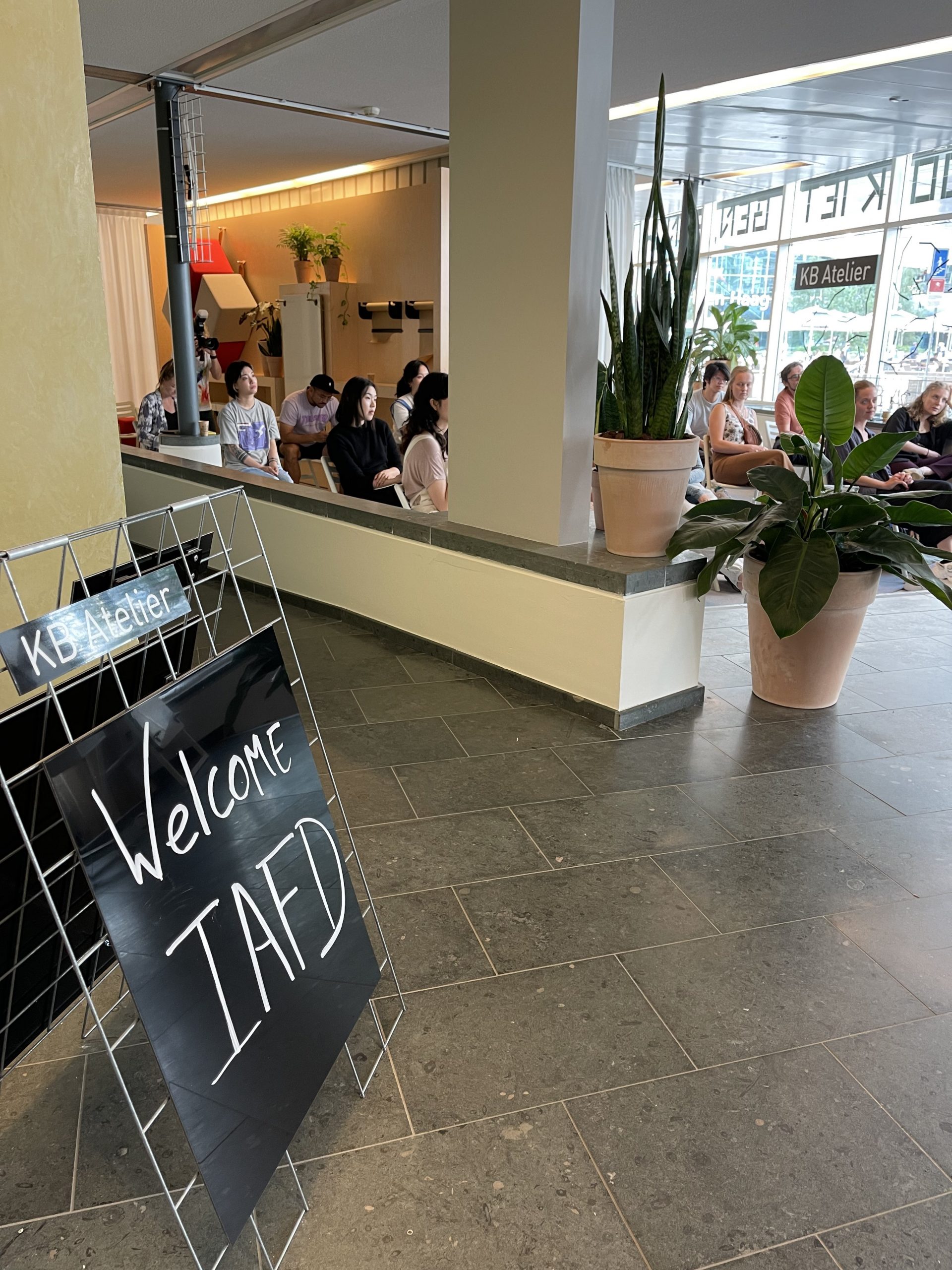
Alba Amicorum
How can we display the digital book? How can we discern the experiences and the essence of its content to make it a more present-day source of inspiration?
National Library of The Netherlands (KB) would like to show the young audience that its collection can stimulate the emergence of new types of contemporary (social, cultural, artistic) interactions offline and online.
The collaboration between the Royal Academy of Art (KABK) and KB national library in the context of the EU project Open Digital Libraries (ODL), will use the specific set of the so-called ‘friendship books’, alba amicorum as a casus to develop a set of interventions that could bring the library a step closer to a method for making digitized (and also physical) collection easier to access and more attractive to its users.
This project is coördinated by Rianne Koning (KB). The artistic and design experiments conducted by the 16 graduating students of Interior Architecture and Furniture Design and led by the team of lecturers consisting of architect Lada Hršak and interaction designer Pawel Pokutycki aim at the development of creative works that contribute to the discoverability and exploitation of the collection. Their learnings will provide valuable knowledge, a ‘food for thought’ in a process of redesigning library facilities and services in the future.
Kick-off project at KB
A physical place, KB Atelier will be provided for experimentations and presentations. The students can explore the possibilties of e.g. VR, AR and mixed reality solutions, data visualizations, and other media to be integrated into the spatial, physical context of the library as well as virtually, online.

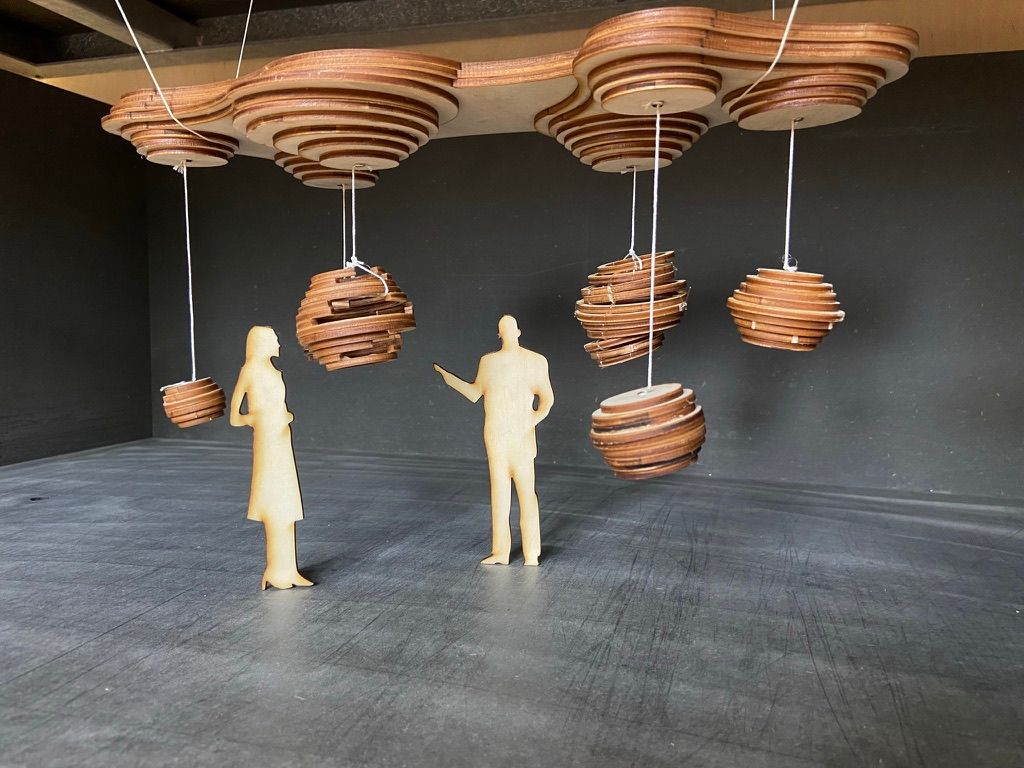
A collaboration between KB, the national library of the Netherlands and TU Delft.
Our libraries are cultural jewels which serve as homes for the works of artists and creators, poets and illustrators. Vast archives of analog works are being migrated to electronic formats. In the digital era – now and in the future – these works spill outside of individual library buildings into public spaces and peoples’ homes. Yet, we still need libraries to be able to view the works in their original format, experience them with all our senses, find a moment of peace away from the bustle of our rushed lives, perhaps encounter other like-minded people, and exchange our knowledge and
inspirations. All this can be facilitated by some form of a “living” interactive environment. We can imagine a library, which grows around its collection, augments and enhances the way people browse and experience collection items, and fosters meaningful interactions among the library visitors and the collection.
In this collaboration between the KB national library of the Netherlands and the TU Delft minor Interactive Environments students will work together to get to know our library collections and let them interact with visitors, students, passersby and all who our interested through interactive installations. They will visit the KB site, get the feel of the building and it’s surroundings and find new ways to incorporate the environment in the interaction between collection and (possible) users.

